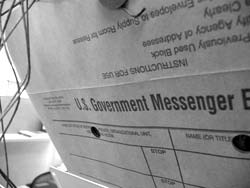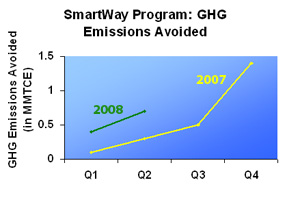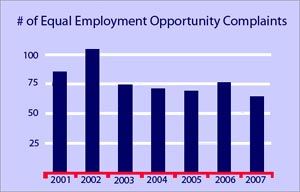“Without continual growth and progress, such words as improvement, achievement, and success have no meaning.”– Benjamin Franklin
Last fall, Benjamin Franklin spent a few minutes with EPA and State environmental leaders at a meeting in Philadelphia (No Really!) Ben related how Philadelphia addressed some of the environmental challenges it confronted during his day and noted a number of improvements (see the video to the left, or read the transcript below). At EPA, we also want to know how we’re doing in addressing some of today’s challenges.
The EPAStat Quarterly Report (EQR) (formerly known as the Quarterly Management Report) provides part of the answer. Every few months – quarterly, not surprisingly – EPA produces a report characterizing how we’re progressing on selected performance measures. The report includes both environmental measures and internal management benchmarks. For example, measures about how we’re working with our partners and stakeholders to improve air and water quality and other measures about how we’re running the agency.
OK…so how are we doing? This quarter’s report indicates two important things. First, from a national perspective we’re on track to meet our goals for the fiscal year. Second, a few results really stood out – in a good way and a few in a not-so-good way. Overall, while performance in many areas is roughly the same as it was last year, during this past quarter EPA and its partners have made a number of impressive gains. We have improved air quality, improved water quality and increased land restoration. In particular, the SmartWay program continues to bring in new partners to reduce transportation-related emissions, which results in measurable air quality and/or greenhouse gas improvements and cost savings (Box 30). On the not-so-good front, there are also a few areas where performance is lagging, but we anticipate significant gains during the fourth quarter, which will enable us to meet our targets in areas such as increasing the number of homes along the Mexico border with improved drinking water services (Box 28) and the completion of assessments of high and moderate production chemicals (Box 42).
Also note that this quarter’s report — in keeping with Ben’s advice about continual growth and progress — reflects a couple changes. First, the report has a new name, EPAStat Quarterly Report. The new title more accurately places this report in the ‘context’ of EPA’s overall performance management activities and EPAStat program (our internal performance management program). Second, we’ve improved the web navigation of the report. The new approach, we think, helps readers get to the data they want more quickly.
So if we could talk with Ben …we’d tell him that we continue to grow and progress. We hope you agree. In any case, we’re trying out some new ideas and we hope that you’ll let us know your ideas for ways to keep improving. Please use the “feedback” link on the webpage and let us know what you think!
See you next quarter,
EPAStat Quarterly Report Team
Transcript of Ben Franklin’s remarks shown in the video above
Ben Franklin: But the thing was, we had some real problems in the early days. Pollution was our biggest problem here in Philadelphia. The wells and the privy pits were too close together. You didn’t dare drink the water in Philadelphia. The river was so badly polluted that when we wanted to cut ice we had to cut it from the school hill and bring it across town. Anything beyond 6th or 7th Street was out in the country.
We had a terrible problem with the air. Our city was heated with wood fires for the most part. During the winter you could barely breathe, but even during the warmer months, we were still cooking with those fires. It was a dusty, dirty city, because the streets were not paved. You couldn’t breathe. Most of the people in Philadelphia slept sitting up because the air quality was so bad that you couldn’t breathe if you were lying down.
Now my friends, I tell you that little story because, my friends, you are the drivers. You need to know the best way to do things, the safest places, the cleanest places, because you’re in charge of it. If we are not creative, if we are not innovative, if we are not working towards solutions, we are going to be left behind as all of the new things come on and as they happen. And your agency is responsible for an awful lot. You basically are responsible for the quality of life in this nation.

 I’ve worked at US EPA since the early 90s. I must enjoy my work, because I’m always surprised to watch the years mount up.
I’ve worked at US EPA since the early 90s. I must enjoy my work, because I’m always surprised to watch the years mount up.
